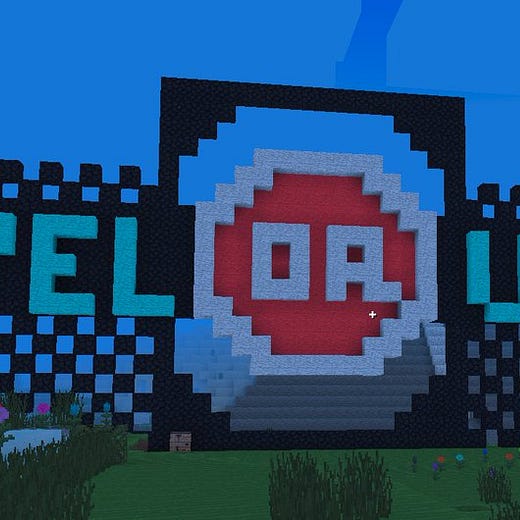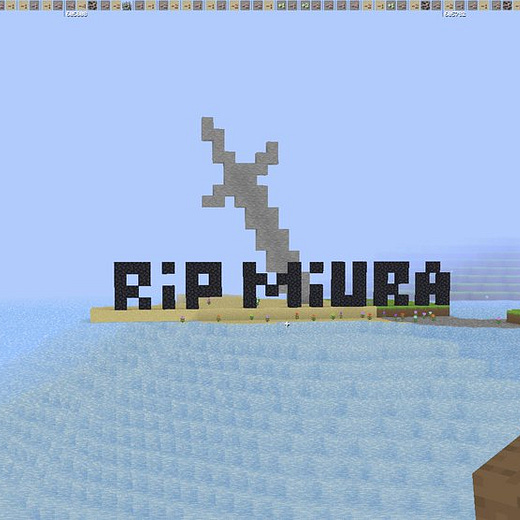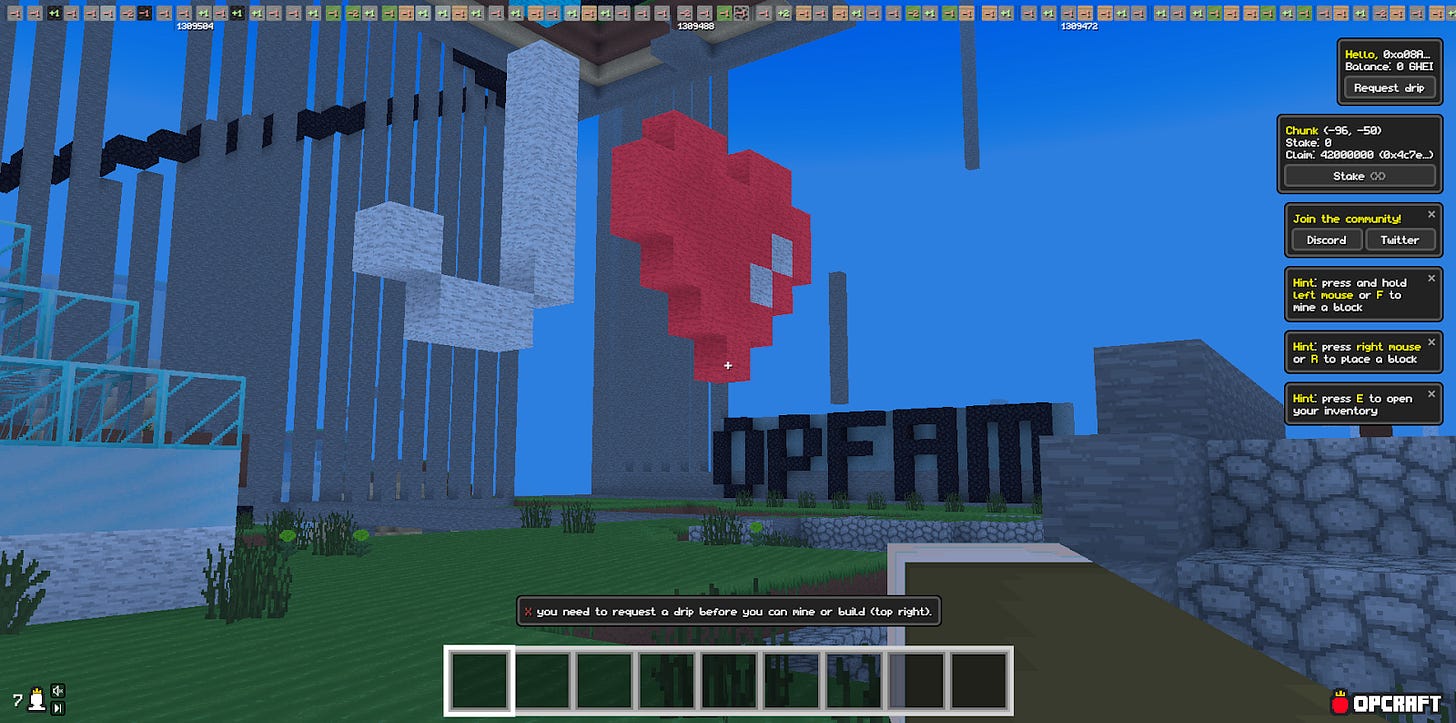Optimistic on OPCraft ⛏️
Is an onchain gaming renaissance beginning?
Metaversal is a Bankless newsletter for weekly level-ups on NFTs, virtual worlds, & collectibles
Dear Bankless Nation,
Earlier this week I wrote on how NFT game design is hard.
Yet not every game should be perfectly polished or even follow conventional gaming wisdoms.
That’s because some games are most useful as experiments for charting out new possibilities.
One such NFT project that’s a compelling unconventional experiment is OPCraft.
OPCraft is interesting because it lies at the crossroads of on-chain game engines and layer-two (L2) scaling solutions in a way we haven’t seen before.
Let’s explore the basics of this innovative project for today’s post!
-WMP
🙏 Sponsor: Upgrade to Bankless Premium to receive the new Monthly Token Report! ✨
📌 A beginner’s guide to OPCraft
🔴 The OP Stack background
To understand OPCraft you first have to grasp its foundation.
Notably, the game is built on OP Stack, which is the modular “build your own blockchain” system that the creators of the Optimism L2 first introduced in October 2022.
As the team explained in their announcement post:
“The OP Stack is the code powering Optimism’s next-gen architecture. It’s a series of modules that work together to form coherent, reliable blockchains. Each of these components implements a specific layer of the stack.”
Optimism’s developers began formalizing this rollup system after noticing their codebase was being forked for all sorts of unique experiments, and one of these early projects was OPCraft, which customized its chain to improve upon Optimism’s already considerable transaction throughput advantages.
🧱 OPCraft 101
Created by the Lattice team, OPCraft is an onchain 3D voxel game.
Voxel refers to the virtual blocks that are used to build structures in-game.
Onchain refers to the fact that the project uses a decentralized blockchain — Optimism’s modular L2 tech — to host Lattice’s MUD game engine rather than centralized servers.
In a certain sense, you could consider OPCraft very onchain since all its activities and items are ultimately tracked via Ethereum transactions, as the builders have previously noted:
“OPCraft is an Autonomous World—a fully on-chain virtual space where every single aspect of the World—every river, blade of grass, and patch of snow sitting atop the mountain ranges—exists on-chain, and every single action in the World happens as an Ethereum transaction.
Just like other crafting-based voxel Worlds, you can explore procedurally generated landscapes, mine ores, place materials, and craft new items. Players can create majestic architectures, erect monuments, and terraform the land, either alone or collaboratively.
OPCraft runs on an op-chain, meaning the blockchain is mainly being used towards updating the World as players modify it. Just like a normal rollup, developers can deploy smart contracts on this chain and anyone can run a node in order to access it.”
🖇️ Why it matters
Two of the most compelling things about making onchain games like OPCraft are the extreme customizability and extreme interoperability possibilities they open up.
Regarding customization, onchain game engines are a modding community’s dream — and modder’s dreams can lead to players’ paradises. In being so open and persistently available, these sorts of engines allow anyone to build over the base game however they want. On this point, Lattice has said:
“Picture the OPCraft World in incredible 4K definition, beautifully ray traced and rendered by Unreal Engine 5. Or picture an enterprise-grade project management UI for managing and automating mining operations in OPCraft. Because the World lives entirely on-chain, anyone can go build a custom client that interacts with it without needing special permissions, as long as the inputs and outputs conform to the protocol. Just like a DeFi protocol that can be accessed through many different portals, OPCraft doesn’t have a canonical representation. We can’t wait for someone to build a client replacing all characters with anime characters, or a complete rewrite with beautiful shaders.”
Secondly, since everything in a game like OPCraft is tracked onchain via smart contracts, all these activities and digital things are immediately interoperable with other smart contracts. This allows people to build their own onchain extensions around games, making the game building a community-centric and open-ended process. The possibilities here are endless.
“Imagine a smart contract that pays you 1 ETH for every diamond block that you mine for it, or a smart contract that etches your name into its stone monument in the World for a price,” Lattice has said.
As another example, in the not so distant future you can imagine your web3 identity and reputation solution of choice fielding your onchain gaming achievements as NFT badges alongside your other personal web3 accolades because the smart contracts in question can directly connect to each other.
🔍 How to explore
If you want to take a look around OPCraft, you can currently head to opcraft.mud.dev.
Take note, though, that OPCraft is just a proof-of-concept on a bespoke Optimism testnet right now. The experiment is running for two weeks, and that two week period ends on Halloween, i.e. October 31st, 2022, at 23:59 UTC.
⚠️ Note: “The World and the chain will be frozen in time, immortalizing any structures, art, and monuments you’ve created.” ⚠️
That said, at the time of this post’s writing you still have a handful of days to get some building and exploring in before the testnet closes, but just remember that any initial creations will soon be digital relics.
As for what comes next, Lattice hasn’t said much at this point, though they have noted that OPCraft “just like current rollups … has a credible path towards autonomy and permissionless.” This suggests OPCraft will eventually evolve to mainnet, so the experiment is seemingly just beginning. Could an onchain gaming renaissance be too?
Only time will tell, but I like the chances. For now if you want to learn more and dig deeper into OPCraft, follow Lattice’s work (Discord, Twitter) or explore and build on OPCraft’s codebase yourself:
Action steps
🧱 Explore OPCraft on testnet
🕹️ Read my previous write-up NFT game design is hard if you missed it!
Author Bio
William M. Peaster is a professional writer and creator of Metaversal—a Bankless newsletter focused on the emergence of NFTs in the cryptoeconomy. He’s also recently been contributing content to Bankless, JPG, and beyond!
Subscribe to Bankless. $22 per mo. Includes archive access, Inner Circle & Badge.
The biggest edge in open finance…
The Inner Circle (our private Discord) is the Bankless watercooler.
It’s where we:
Compare notes on opportunities (“What’s your experience with Compound?”)
Ask questions to the community (“Is a Maker loan taxable in the US?”)
Get help with assignments (“I’m having trouble with Argent—any ideas?”)
And when you sign up for Bankless Premium, you get immediate access
Not financial or tax advice. This newsletter is strictly educational and is not investment advice or a solicitation to buy or sell any assets or to make any financial decisions. This newsletter is not tax advice. Talk to your accountant. Do your own research.
Disclosure. From time-to-time I may add links in this newsletter to products I use. I may receive commission if you make a purchase through one of these links. Additionally, the Bankless writers hold crypto assets. See our investment disclosures here.













Hey William, been a reader for a while now! We’re launching our NFT collection's community of the most active web3 contributors, motivated by one vision:
-push web3 education forward
We like to invite you to the society 🥷
We're forming a network of creators & builders for which we deliver a series of mini products, broader vision is to scale a web3 learning platform. DMs are open here or on Twitter :)